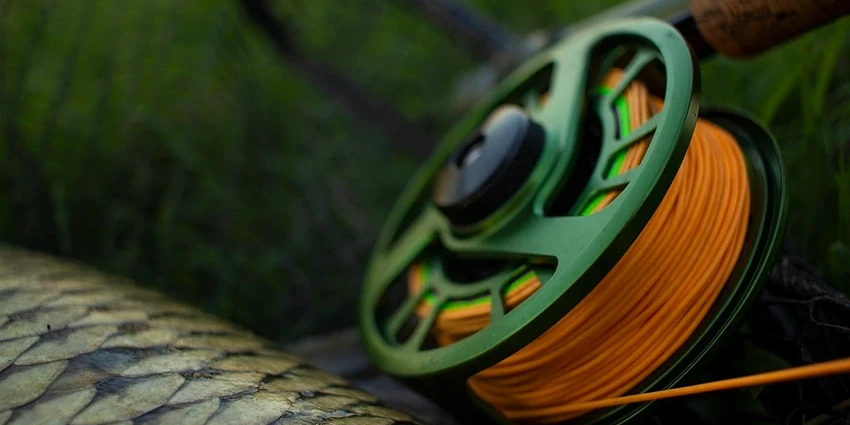All products were chosen independently by our editorial team. This review contains affiliate links and we may receive a commission for purchases made. Please read our affiliates FAQ page to find out more.
Bass fishing is more than just a pastime; it’s an art form that requires skill, patience, and a deep understanding of the aquatic environment. Whether you’re a weekend warrior at the local pond or a seasoned pro on the tournament trail, mastering the art of bass fishing is a journey that never truly ends. In this article, we’ll dive into the world of bass fishing techniques, exploring both the fundamentals and some advanced strategies to elevate your game.
Jump to:
Introduction to Bass Fishing Techniques
Bass fishing is a dynamic sport, constantly evolving with new techniques and strategies. It’s not just about throwing a line in the water; it’s about understanding the behavior of bass, the environment they thrive in, and how to effectively use your gear to outsmart these cunning predators.
Essential Gear for Bass Fishing
Rods, Reels, and Line Types
- Rods: Look for a balance between sensitivity and strength. A medium-heavy rod is versatile for various techniques.
- Reels: Baitcasting reels offer precision, while spinning reels are great for beginners.
- Lines: Fluorocarbon lines are almost invisible underwater, ideal for clear water. Braided lines offer strength and sensitivity.
General Tackle Recommendations
- Lures: Soft plastics, crankbaits, and spinnerbaits are staples.
- Hooks: Wide gap hooks are great for soft plastics.
- Weights: Tungsten weights are denser and more sensitive than lead.
Basic Bass Fishing Techniques
Casting Basics
- Overhead Cast: Great for distance and power.
- Sidearm Cast: Useful for low-hanging covers.
- Pitching and Flipping: For precise, close-quarters fishing.
Retrieval Methods
- Steady Retrieve: Consistent speed, good for spinnerbaits.
- Jerk and Pause: Mimic injured prey, effective for jerkbaits.
- Bottom Bouncing: Ideal for jigs and Texas-rigged plastics.
The Importance of Lure Selection
- Match the Hatch: Use lures that resemble local prey.
- Color Choices: Natural colors for clear water, bright or dark for murky conditions.
- Size Matters: Match the size of the local forage.
Advanced Techniques for Seasoned Anglers
Sight Fishing with Advanced Rigs
- Tokyo Rig: Effective for bedding bass in spring. A compact profile with a soft plastic bait above the weight.
- Carolina Rig: Great for deeper water, it allows for long casts and slow retrieves.
Topwater Techniques
- Walking the Dog: A rhythmic side-to-side action on the surface.
- Popping and Chugging: Creates surface disturbance, attracting aggressive bass.
Deep-Water Tactics
- Drop Shotting: Keeps the bait suspended above the bottom, ideal for finicky fish.
- Football Jigs: Great for rocky bottoms and deep ledges.
Environmental Factors Affecting Bass Behavior
Water Temperature and Clarity
- Cold Water: Slow down your presentation.
- Warm Water: Faster retrieves and aggressive lures.
- Clear Water: Subtle colors and natural presentations.
- Murky Water: Bright colors and vibration or noise.
Weather Patterns
- Sunny Days: Bass may seek shade under cover.
- Overcast Days: Bass are more likely to roam and hunt.
Seasonal Changes
- Spring: Bass move shallow for spawning.
- Summer: Look for bass in deeper, cooler water.
- Fall: Bass feed aggressively to prepare for winter.
- Winter: Slow down your presentation in cold water.
Improving Your Casting Accuracy
Practice Drills
- Target Practice: Aim for specific points in the water.
- Varying Distances: Practice casting at different ranges.
Tips for Precision
- Control Your Cast: Focus on smooth, controlled movements.
- Adjust Your Equipment: Fine-tune your reel settings for optimal performance.
Strategies for Locating Bass
Bass are elusive creatures, and finding them can sometimes feel like searching for a needle in a haystack. However, with the right approach, you can significantly increase your chances of success.
Understanding Bass Habitats
- Structure and Cover: Bass love areas with ample cover and structure, such as submerged logs, weed beds, and rock formations.
- Depth: Pay attention to the depth of the water. Bass often prefer certain depths, depending on the season and water temperature.

Using Technology to Find Fish
- Fish Finders: Utilize sonar technology to locate schools of bass.
- GPS Mapping: Use GPS to mark successful fishing spots for future reference.
Register for our latest in-depth reviews and product round-ups from the experts
Enter your email address below to receive our twice monthly reviews emails.
By entering your details, you are agreeing to our terms and conditions and privacy policy. You can unsubscribe at any time.
Mastering Different Water Bodies
Each type of body of water presents its own unique challenges and opportunities for bass fishing.
Lakes and Ponds
- Points and Drop-offs: Look for areas where the depth changes dramatically.
- Vegetation: Weed lines and lily pads are hotspots for bass.
Rivers and Streams
- Current Breaks: Areas where the current slows down, like behind large rocks or fallen trees.
- Eddies: Small whirlpools formed by the current can be productive.
Coastal Areas
- Estuaries: Brackish water areas where freshwater meets the sea.
- Tidal Flows: Pay attention to how the tides affect bass movement.
Adapting Techniques for Various Bass Species
Different bass species have different preferences and behaviors.
Largemouth Bass
- Preferred Habitat: Largemouths love weedy, shallow areas.
- Effective Techniques: Topwater lures and weedless setups work well.
Smallmouth Bass
- Preferred Habitat: Rocky bottoms and clearer water.
- Effective Techniques: Crankbaits and spinnerbaits are effective.
Other Bass Varieties
- Striped Bass: Look for them in deeper water.
- Spotted Bass: Often found in clearer, faster-moving water.
Mental and Physical Aspects of Bass Fishing
Bass fishing is as much a mental game as it is a physical one.
Patience and Perseverance
- Adaptability: Be ready to change tactics if something isn’t working.
- Patience: Sometimes, the key is just to wait for the bass to bite.
Physical Fitness for Anglers
- Stamina: Building your physical endurance can help during long fishing sessions.
- Dexterity: Regular practice can improve your casting accuracy and lure manipulation.
Community and Learning
Joining a community of fellow anglers can be incredibly beneficial.
Joining Fishing Communities
- Online Forums: Places like BassResource offer a wealth of knowledge.
- Local Clubs: Great for networking and learning from experienced anglers.
Learning from Others
- Fishing Buddies: Sometimes, the best way to learn is by fishing with someone more experienced.
- Tournaments: Participating in or even observing tournaments can offer valuable insights.
Frequently Asked Questions
Early Morning and Late Afternoon: Bass are most active during these times.
Match the Hatch: Use lures that mimic the local prey in size, shape, and color.
Gently and Respectfully: Use wet hands, support the bass’s weight, and release it as soon as possible.
Absolutely: Bass behavior changes with weather patterns, so adapt your techniques accordingly.







